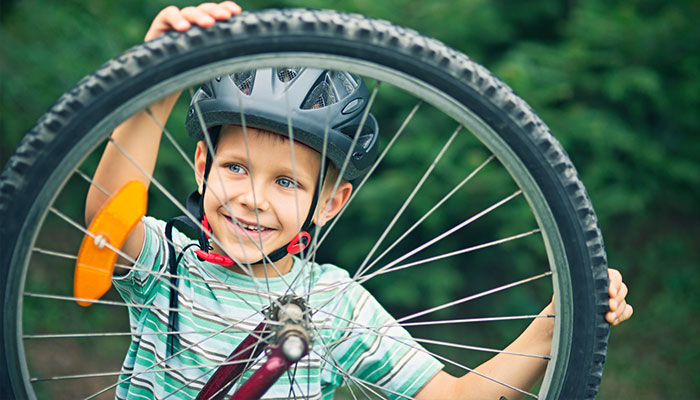While we believe that the books and resources recommended may be of value to you, keep in mind that these are suggestions only and you must do your own due diligence to determine whether the materials are appropriate and suitable for your use. PNC has no sponsorship or endorsement agreement with the authors or publishers of the materials listed.
TRANSPORTATION
Wheels
Children will experiment with wheels.


Lesson Objective
In the context of transportation, the children will experiment with different sizes and numbers of wheels to find out which wheels move faster.
Science
What You'll Need
- An assortment of different sized wheels
- Toy cars with different sized wheels (large and small)
- Toy cars with 4 wheels and toy cars with more than 4 wheels
- Ramps for racing the cars (thin pieces of wood or cardboard 3 to 5 feet long)
What To Do
- Begin a discussion with the children about wheels (see Guiding Student Inquiry).
- Explain that you brought some different wheels for them to investigate.
- Show the children the wheels, and allow them to explore.
- Ask children which they think is faster: big wheels or smaller wheels. Why?
- Tell the children that they will be performing an experiment by racing a car with big wheels and a car with small wheels. Allow the children to take turns racing the cars down the ramp.
- Ask, “Why did this car win?”
- Ask children which they think is faster: a vehicle with more wheels or a vehicle with fewer wheels. Why?
- Have the children experiment some more by racing a car with 4 wheels and then racing a car with more than 4 wheels. Allow the children time to race their cars down the ramp.
- Ask, “Why did this car win?”
Resources
Home School Resources
Home educators: use these printable lesson PDFs to teach this lesson to your home schoolers. They're available in English and Spanish.
Content Provided By
Common Core State Standards Initiative – These lessons are aligned with the Common Core State Standards ("CCSS"). The CCSS provide a consistent, clear understanding of the concepts and skills children are expected to learn and guide teachers to provide their students with opportunities to gain these important skills and foundational knowledge [1]. Visit the CCSS


